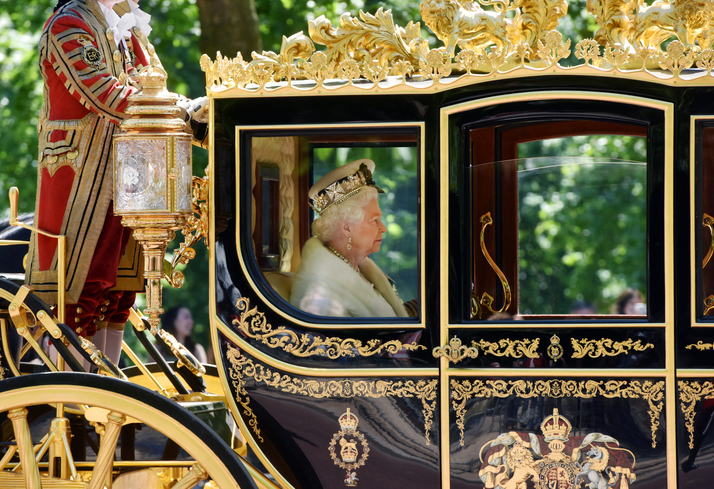Queen has great news for pension savers, but could do more
Pensions starred in the Queen's speech, but our head of investments argues politicians must go further.
14th October 2019 15:47
by Rebecca O'Keeffe from interactive investor
Pensions starred in the Queen's speech, but our head of investments argues politicians must go further.

There are some very positive moves from the Queen's speech on pensions – not least confirmation on the Pensions Dashboard. With the Government having no majority in parliament, we can only hope that this makes it into law sooner rather than later. It is vital for investors to know how much they have, where they are invested and what they need in order to plan effectively.
It is also critical that investors appreciate what choices they have made in the past in respect of investment and lifestyle options so that they have a clear picture of what they need to do now.
However, it is still the case that auto-enrolment does not get people to save enough for their future and could potentially leave people with less than they hoped. We call on the Department for Work and Pensions (DWP) to take another look at the auto-enrolment rules to make sure that they work for everyone.
Let's make auto enrolment work for everyone
Whilst we support the proposed reduction in the minimum age limit for auto enrolment to 18, the Government's ambition to implement the change in the mid-2020s is lethargic and risks leaving a whole generation of workers behind.
We'd also like to see the £10,000 earnings threshold widened beyond single employers. Research by Citizens Advice in 2017 found that this threshold has frozen out more than 100,000 workers, most of whom (72,000) were women who may work several part-time jobs. We need to fix this.
Finally, we need to see better financial education tied in to auto enrolment, with proper conversations about risk and reward, and the benefits of saving even small amounts extra.
We have calculated that someone with £20,000 qualifying earnings, working straight through from the ages of 22 to 67, the state retirement age, adopting a relatively cautious investment strategy, targeting 3% annual growth, could be almost £112,000 worse off at 67 than if they adopted a riskier strategy yielding 5% a year (£150,752 versus £262,389).
With a 7% annual return, the difference is almost £324,000. But there is a risk-return trade-off: invested money can render higher profits only if the investor will accept a higher possibility of losses.
Somebody who contributes an extra £40 (£50 with tax relief) a month on top of their existing contributions from age 22 to 67, and achieves a 7% average annual return, could accrue a pension pot of more than £652,000.
That is £445,000 more than someone who saved the same amount but opted for a more cautious investment strategy averaging 3% a year.
£20,000 qualifying earnings, start investing from age 22 straight through to 67
| Annual return | 3% | 5% | 7% |
|---|---|---|---|
| 8% auto-enrolment* | £150,752 | £262,389 | £474,355 |
| 8% auto enrolment with an extra £25 per month employee contribution | £179,018 | £311,587 | £563,297 |
| 8% auto enrolment with an extra £50 per month employee contribution | £207,283 | £360,785 | £652,238 |
Table does not consider inflation or pay increases and is for illustrative purposes only. Figures are calculated based on assumed annual returns, with monthly contributions.
*8% auto-enrolment is based on a 3% employer contribution, 4% employee contribution and 1% tax relief. Extra £25 per month contribution based on an additional £20 per month paid by employee and £5 tax relief. Extra £50 per month contribution based on £40 paid by employee and £10 tax relief.
These articles are provided for information purposes only. Occasionally, an opinion about whether to buy or sell a specific investment may be provided by third parties. The content is not intended to be a personal recommendation to buy or sell any financial instrument or product, or to adopt any investment strategy as it is not provided based on an assessment of your investing knowledge and experience, your financial situation or your investment objectives. The value of your investments, and the income derived from them, may go down as well as up. You may not get back all the money that you invest. The investments referred to in this article may not be suitable for all investors, and if in doubt, an investor should seek advice from a qualified investment adviser.
Full performance can be found on the company or index summary page on the interactive investor website. Simply click on the company's or index name highlighted in the article.